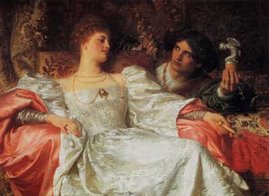Three (Affordable) Resources for Learning About Women's Fashions in the Regency Era:
When I first began researching women's dress of the Regency era, I looked up lists of books on the topic, only to find many of these resources were out of my price range. Hence, the list below for budding researchers who don't want to exceed their budgets.
1.
Fashion in the Time of Jane Austen is probably one of the most affordable books on this list. Although it is relatively brief, just 63 pages, Sarah Jane Downing includes numerous images to enhance the reader's understanding of the intricacies of Regency women's dress.
2.
The Art of Dress was one of the first books I used when I began researching the history of women's dress. Jane Ashelford, a respected historian, uses the National Trust's costume collection to provide a broad survey of four centuries of fashion. The book contains a treasure trove of images and includes information on different styles and materials.
3. Elizabeth Ewing's
Dress and Undress is essential if you wish to acquire a full understanding of the typical Regency woman's use of clothes. Ewing provides fascinating accounts of nineteenth century "bust improvers" and details on specific enhancement such as the divorce corset. This book will definitely assist romance writers and interest nineteenth century researchers in general.
Bonus Resource:
The Regency Fashion Page
Cathy Decker's website provides hundreds of images for the serious researcher. I especially enjoy Decker's
Regency Style Year-by-Year page, which is helpful for writers with a specific date in mind.










